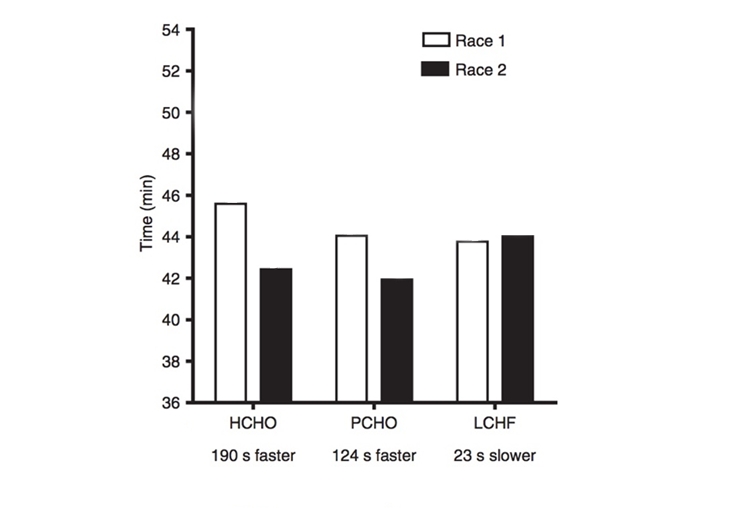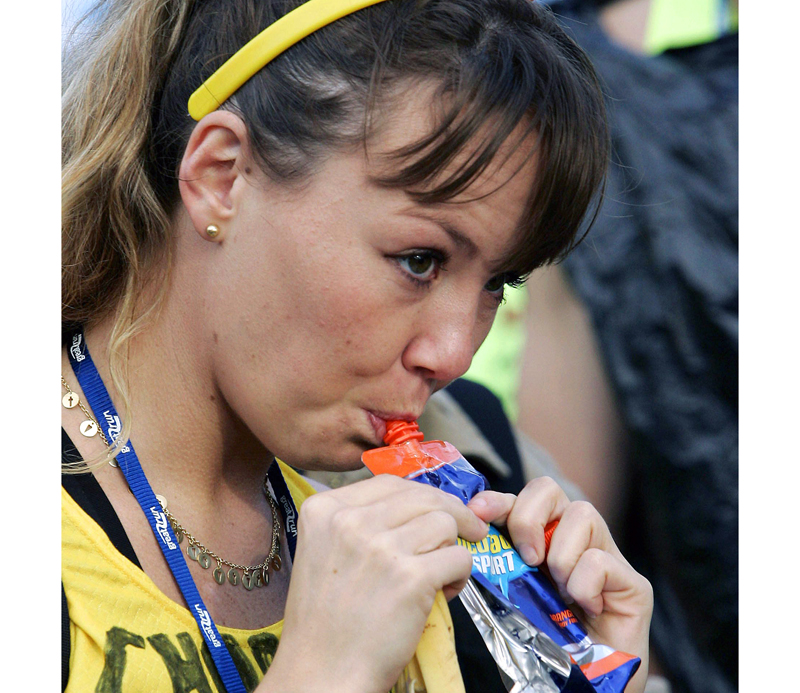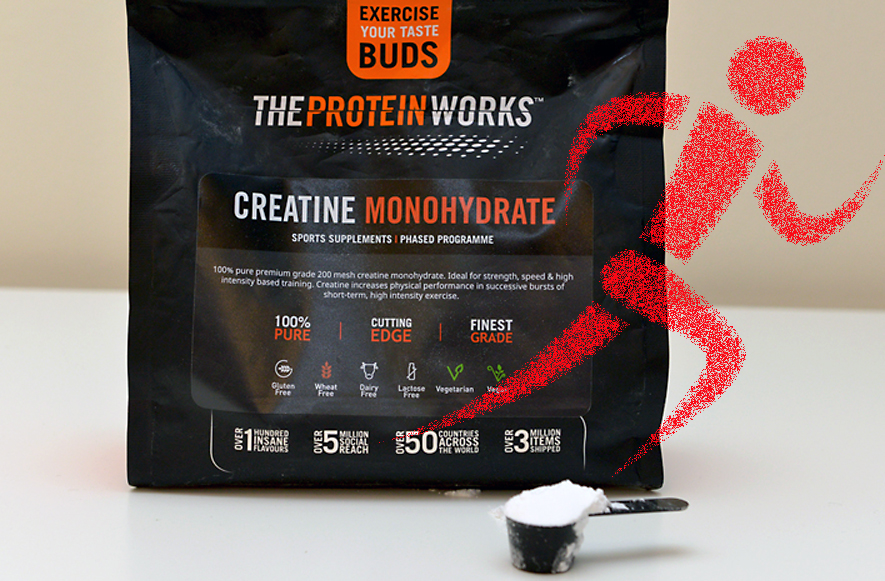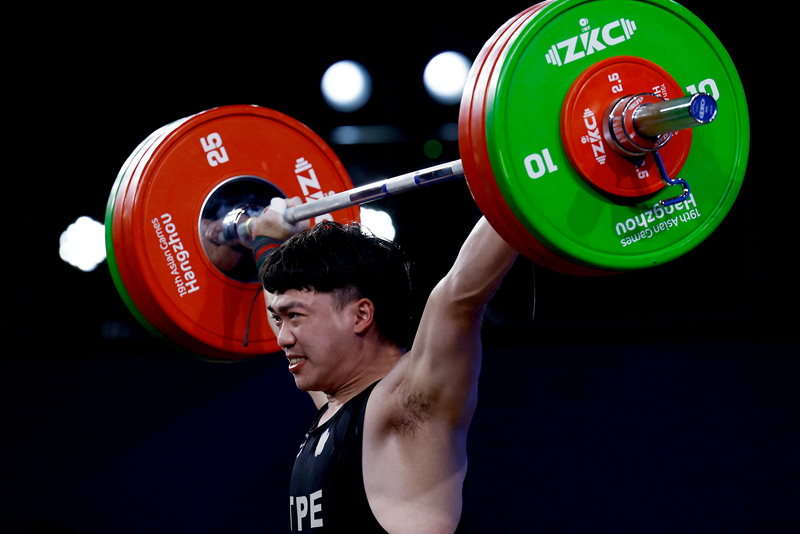Energy deficiency in athletes: the road to recovery (and better performance)

In her previous article, Alicia Filley discussed the concept of relative energy deficiency in sports (RED-S) - a complex phenomenon that affects both male female and female. In this article, she explains the effect energy deficit has on athletes and what can be done to return to health.
Low energy availability (EA) has both health and performance consequences for an athlete. In females, low EA affects the hypothalamus, interrupts the emission of luteinising hormone, and thereby disturbs the menstrual cycle. (While a direct result of low EA, menstrual abnormalities should always be investigated by a physician to rule out other possible causes.) As oestrogen levels fall, bone reabsorption rates rise. Furthermore, when EA falls below 30 kcal per kilo of fat-free mass per day (kg FFM/day), the body slows down the process of making new bone. These two effects, along with disordered eating, make up the ‘female triad’, a syndrome now incorporated into the RED-S paradigm.
The studies on the reproductive hormones and bone health in male athletes are few, usually small, and difficult to compare. However, it seems that men with low EA also experience a decrease in hormones such as testosterone, leptin and insulin(1). Similar to women with decreased EA, they develop low bone mineral density (BMD). Most at risk are those who compete in non-weight bearing sports - cyclists, jockeys, swimmers - and perform repetitive motions. Low BMD increases the occurrence of stress fractures, a common finding in those with RED-S. Researchers from the University of Washington medical centre cite a 20% annual incidence of bone stress injury in both male and female collegiate runners, a population at high risk for RED-S(2).
Low EA is a factor in decreased immunity. Theoretically, when the body lacks energy, it supresses the release of catecholamines (epinephrine and norepinephrine), which regulate the immune and inflammatory responses. Researchers at University College Dublin reviewed five small studies of the effect of short-term weight loss and calorie restriction on immune responses in competitive martial arts athletes(3). They showed a decrease in levels of salivary immunoglobulin A (IgA) during periods of weight-class prep for competition, indicating lower mucosal immunity and decreased ability to fight off upper respiratory pathogens. Two studies found that taekwondo athletes with low salivary IgA developed a significantly higher number of upper respiratory infections(3).
Heart health
Cardiovascular health is not immune to the effects of low EA. Although uncertain as to exact mechanisms, scientists report high levels of cholesterol and decreased vascular health in dancers with menstrual dysfunction(3). Two studies of short-term calorie restricted athletic males found an increase in free fatty acid and triglyceride levels (associated with an increased risk of heart disease) with induced energy deficiency(3). Sport, severity of energy restriction, and amount of time spent in an energy deficient state seem to have varying effects on the cardiovascular system, from mild changes to severe alterations in cardiac responses.In severe states of low EA, disruptions occur in the gastrointestinal system(1). These disturbances range form stool leakage, slow digestion, or constipation. Low EA also decreases resting metabolic rates, iron, and growth hormone levels. Recovering RED-S athletes interviewed by this author described themselves during periods of low EA as “grumpy, anti-social, anxious, and moody.” Adolescent females with RED-S exhibit more symptoms of depression or psychosomatic disorders than healthy females(1). The IOC notes that while psychological issues may exist prior to the development of RED-S, and even trigger low EA behaviours, they may also be a consequence of low EA.
Slim chance of winning
Athletes chasing personal bests often fall prey to the power-to-weight ratio. This model measures power produced per kilogram of body weight. An athlete may undertake a mission to eliminate all non power-producing body fat, without the proper training and fuelling to build power-generating muscle. This ‘lean and mean’ mind-set focuses only on the numbers on the scale and not the integrity of the body’s composition and physiology. To drop the fat, athletes often succumb to the concept of ‘clean eating’, which usually translates to eliminating calorie-dense carbohydrates from the diet. While effective at weight loss, does this approach improve performance?An excellent study spearheaded by the Australian Institute of Sport, examined the effect of energy deprivation on the performance of 21 world-class male race walkers(4). Over the course of a three-week intensive training camp, they sorted athletes according to their diet preferences of a carbohydrate-rich, periodised, or low-carbohydrate (Keto) diet. The subjects between groups were matched according to overall performance, weight, aerobic capacity, and age.
This study design bypassed some of the difficulty in RED-S investigations as all athletes participated in the same supervised training activities, standardising energy expenditure. In addition, all meals were prepared for individual athletes and consumption was closely monitored and recorded, the energy intake of the athletes was standardised at 40kcal per kilo of bodyweight per day. All athletes experienced the same small energy deficit, but what varied was the composition of the caloric intake.
Prior to and after three weeks of training, all participants underwent three days of performance testing. Results showed that all training groups improved in peak aerobic capacity. As expected, the low-carbohydrate, high-fat diet group had the greatest amount of fat oxidation during exercise. However, this modification in metabolism resulted in greater oxygen demands that offset the aerobic training benefits. Thus, only the high carb and periodised groups actually showed improvements in 10 kilometre race times; the low-carb group had a post-intervention time of 23 seconds SLOWER than pre-intervention (see figure 1).
Figure 3: Why the type of energy deficit matters

Subjects completed an official, timed 10-kilometre race walk before and after training and dietary intervention. The high carbohydrate (HCHO) and periodised carbohydrate (PCHO) groups performed significantly better after the three-week intervention (including one national record setting time), whereas the performance mean of the low-carbohydrate, high-fat (LCHF) group was lower despite the training and improved aerobic peak capacity.
Despite all athletes having the same energy intake, the energy deficit from the low carb diet appears to have negatively impacted training results. Therefore, there may be more to energy deficit than simply restricted calories - if the calories lost are those that fuel endurance. Scientists hypothesise that this is due to the impairment of glucose storage and utilisation, meaning ‘clean eating’ may in fact impact an athlete’s performance in a negative way. Other reasons low EA may hinder performance include an increased risk of injury and illness, compromised protein synthesis, and reduced muscle recovery(1)1. Similar performance results have been found in studies of rowers, swimmers, and gymnasts with controlled energy deficit or menstrual suppression due to low EA(1).
Weighing the odds
In a study from Harvard Medical School released just prior to publication of this article, 1000 female patients, with an average age of 18.9 years, seen in the medical system for a sporting injury, completed a survey to assess the incidence and consequences of low EA(5). All subjects had a body mass index (BMI) in the normal range. Despite that, nearly half of the participants (473) were determined to have low EA. The low EA group had poorer markers of health as identified by the IOC consensus chart (see part one article), except growth and immunologic function. In addition, they also experienced poorer performance indicators. The researchers then calculated an odds-ratio of health or performance consequences, showing the risk of flirting with low EA (see below).Health Consequence of low EA Risk of development in female athlete with low EA versus normal EA
Metabolic disturbance 3 times more likely
Cardiovascular issues 2.5 times more likely
Psychological issues 2.4 times more likely
Haematological issues 1.6 times more likely
Gastrointestinal disturbances 1.5 times more likely
Impaired bone health 1.7 times more likely
Menstrual disturbances 1.9 times more likely
Performance Consequences of low EA
Decreased training response 2.1 times more likely
Impaired judgement 4.3 times more likely
Feeling uncoordinated 1.6 times more likely
Problems concentrating 2 times more likely
Feeling irritable 1.6 times more likely
Feeling depressed 2.3 times more likely
Decreased endurance 1.5 times more likely
Fuelling to win
While scientists lack a full understanding of the complex pathways of impairment, its safe to say that optimal energy intake and effective, not excessive, energy output are important for peak health and performance. The first step for athletes assessing their EA is to get reliable, evidence-based nutrition advice; following the advice of well meaning coaches, teammates, or web gurus may not be enough! If you’re experiencing any of the issues raised in this article, it is worth paying for a consultation from a registered dietician and a physician who specialise in sports. If you’re found to have low EA, they may recommend training adjustments, more frequent meals, a diet rich in nutrient dense foods, medical tests, and monitoring.The next step is action. Studies across many fields show that knowing what to do doesn’t always translate into doing it(3)! To support healthy choices, immerse yourself into a culture of healthy competition, where coaches support researched training approaches, discourage overtraining, and peers encourage healthy practices. Marathoner Anna Boniface advises, “Talk about it openly and don’t accept these issues as being normal” (see case study). It may mean leaving your beloved running club with the ‘slim it to win it’ unofficial motto, but your health and performance will benefit.
Finally, give your body time to heal. One day or one week of doing it right does not make up for 100s of miles and months or years of asking your body to a lot with a little. For females, it may take six months or more for menses to return. For males, it takes just as long to re-establish complete bone health. The investment in time now means you’re more likely to stay competitive in the long term. Boniface again shares, “Its important to be patient in sport and strive for longevity. Losing weight and overtraining is only cutting corners to success. It is not sustainable.”
Case Study: Anna Boniface

Twenty-seven-year-old Anna Boniface dabbled with running in school, but didn’t become consistent until entering university to study physiotherapy at the age of 19. The last three years of serious training resulted in a dazzling rise to become one of the top British female running stars. All that came to a screeching halt in October of 2017, not long out of the starting gate of her international debut at the Toronto Marathon, when she could no longer ignore the pain in her leg from a stress fracture in her fibula.
Looking back, Anna acknowledges the behaviours that contributed to her fracture and diagnoses of RED-S, mainly, overtraining. “I am a driven and competitive person. I have high aspirations and I wanted to run faster and keep performing better,” she says. Her desire to achieve led to more and more miles, far beyond her training program, into exercise addiction territory.
While weight loss and restricted eating weren’t her primary goal, the result of hidden mileage without adequate energy intake, meant her body sacrificed biological processes to fuel her activity. In addition to her declining bone strength, she’s been open about the eight-year disruption in her menstrual health, and reports that she felt irritable, anxious and low leading up to the Toronto race – all glaring signs of RED-S.
Anna views her forced hiatus as a mixed blessing. Her fracture left her non-weight bearing, unable perform her job as a respiratory physiotherapist or even drive. With time on her hands, Anna focused and crafted her story. She’s using her experiences, and platform as part of the Saucony racing team, to raise awareness of RED-S, especially among young athletes and sports professionals who work with them. Her unique viewpoint as both athlete and health professional gives this once Diet-Coke guzzling athlete, a broad appeal.
Just recently released to begin running again, Anna already notices the benefits from getting her energy availability right. “I can train harder and recover more quickly,” she says. Signs that she’s missed the mark include irritability, fatigue, and feeling famished in the evenings. Being aware of the benefits of positive EA, as well as the detriments of low EA, means she’s more motivated to do what it takes to plan for proper nutrition to fuel her performance dreams.
References
- Br J Sports Med. 2018;52:687-97
- PM R. 2018 Mar 14; S1934-1482(18):30127-8
- Sports Med. Oct 2017;48(suppl 1):1-24
- J Physiol. 2017;2785-2807
- Br J Sports Med. 2018;0:1-6
You need to be logged in to continue reading.
Please register for limited access or take a 30-day risk-free trial of Sports Performance Bulletin to experience the full benefits of a subscription. TAKE A RISK-FREE TRIAL
TAKE A RISK-FREE TRIAL
Newsletter Sign Up
Testimonials
Dr. Alexandra Fandetti-Robin, Back & Body Chiropractic
Elspeth Cowell MSCh DpodM SRCh HCPC reg
William Hunter, Nuffield Health
Newsletter Sign Up
Coaches Testimonials
Dr. Alexandra Fandetti-Robin, Back & Body Chiropractic
Elspeth Cowell MSCh DpodM SRCh HCPC reg
William Hunter, Nuffield Health
Keep up with latest sports science research and apply it to maximize performance
Today you have the chance to join a group of athletes, and sports coaches/trainers who all have something special in common...
They use the latest research to improve performance for themselves and their clients - both athletes and sports teams - with help from global specialists in the fields of sports science, sports medicine and sports psychology.
They do this by reading Sports Performance Bulletin, an easy-to-digest but serious-minded journal dedicated to high performance sports. SPB offers a wealth of information and insight into the latest research, in an easily-accessible and understood format, along with a wealth of practical recommendations.
*includes 3 coaching manuals
Get Inspired
All the latest techniques and approaches
Sports Performance Bulletin helps dedicated endurance athletes improve their performance. Sense-checking the latest sports science research, and sourcing evidence and case studies to support findings, Sports Performance Bulletin turns proven insights into easily digestible practical advice. Supporting athletes, coaches and professionals who wish to ensure their guidance and programmes are kept right up to date and based on credible science.









